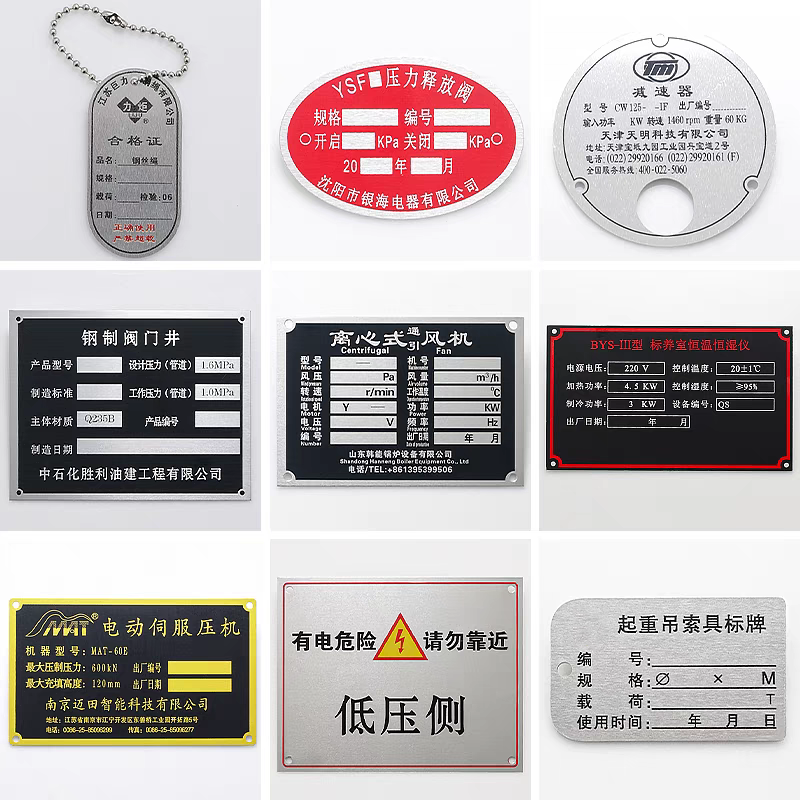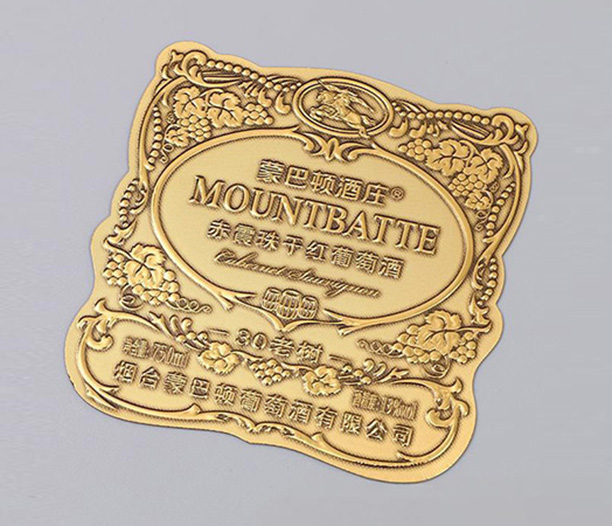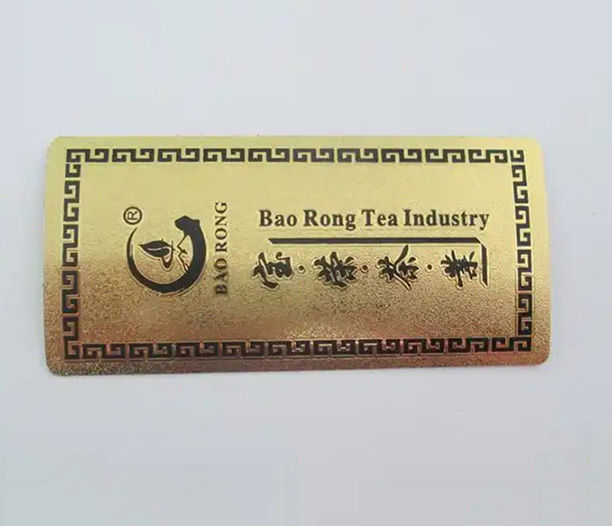When it comes to identification, branding, or informational signage, a display metal name plate stands out for its durability, professionalism, and aesthetic appeal. These plates are ubiquitous in industries ranging from manufacturing and aerospace to retail and hospitality, serving as permanent markers for equipment, products, or directional purposes. But what goes into creating a high-quality display metal name plate? This article delves deep into the technical aspects and craftsmanship involved, exploring the materials, processes, and design considerations that define these essential components. By understanding the intricacies, you can make informed decisions for your projects, ensuring longevity and visual impact.

Understanding Display Metal Name Plates
A display metal name plate is typically a flat, rigid piece of metal engraved or stamped with text, logos, or graphics. Unlike plastic or paper alternatives, metal plates offer superior resistance to environmental factors like moisture, UV exposure, and physical abrasion. They are commonly used for asset tagging, serial number labels, control panel identifications, and decorative signage. The term "display" emphasizes their role in visible applications where clarity and permanence are critical. Whether it’s for industrial machinery or corporate lobbies, a well-crafted display metal name plate enhances credibility and functionality.
Material Selection for Durability and Aesthetics
The choice of metal significantly influences the performance and appearance of a display metal name plate. Common materials include aluminum, stainless steel, brass, and zinc, each with distinct properties. Aluminum is lightweight, corrosion-resistant, and cost-effective, making it ideal for indoor and outdoor use. Stainless steel offers exceptional strength and resistance to harsh chemicals, suited for high-wear environments. Brass provides a classic, elegant look with natural antimicrobial properties, while zinc alloys allow for intricate designs due to their malleability. When selecting a material, consider factors like exposure to elements, required lifespan, and budget. For instance, an outdoor display metal name plate might use aluminum with a protective coating to prevent tarnishing.
Advanced Manufacturing Techniques
The production of a display metal name plate involves several precision techniques, each affecting the final product’s quality and cost. Photo etching, also known as chemical etching, is a popular method for creating intricate designs without distorting the metal. It uses a photoresist and etchant to selectively remove material, resulting in sharp, burr-free edges. Stamping, on the other hand, uses dies to press designs into the metal, ideal for high-volume runs but less suited for fine details. Laser engraving has gained traction for its versatility and speed, using focused beams to vaporize metal surfaces for permanent markings. Additionally, CNC machining offers high precision for 3D effects or complex shapes. Each technique requires skilled craftsmanship to ensure the display metal name plate meets specifications, such as depth consistency and readability.
Surface Finishing and Customization Options
Surface treatments enhance both the aesthetics and durability of a display metal name plate. Anodizing, commonly used for aluminum, creates a hard, protective layer that can be dyed in various colors, improving corrosion resistance and visual appeal. Powder coating applies a durable, decorative finish that resists chipping and fading, while plating with materials like chrome or nickel adds a reflective, luxurious touch. For added functionality, finishes can include anti-glare textures or conductive coatings. Customization extends to fonts, graphics, and mounting options—such as adhesive backing or holes for screws—ensuring the plate integrates seamlessly into its environment. A well-finished display metal name plate not only lasts longer but also reinforces brand identity through consistent coloring and styling.

Design Considerations for Optimal Performance
Designing an effective display metal name plate involves balancing technical requirements with visual elements. Legibility is paramount; factors like font size, contrast, and spacing must be optimized for the intended viewing distance. For example, a plate used in low-light conditions might benefit from raised lettering filled with enamel for better visibility. Durability considerations include edge rounding to prevent injury and material thickness to withstand handling. Compliance with industry standards, such as MIL-STD-130 for military applications, may dictate specific markings or data formats. Using CAD software during the design phase allows for precise prototyping and adjustments, reducing errors in the final display metal name plate. Collaboration between designers and manufacturers ensures that the plate is both functional and aesthetically pleasing.
Applications Across Industries
The versatility of display metal name plates makes them indispensable in various sectors. In industrial settings, they label machinery parts with serial numbers or safety warnings, ensuring operational efficiency and compliance. The automotive industry uses them for VIN plates or component identification, while consumer electronics rely on them for branding and regulatory information. In architectural contexts, these plates serve as directional signs or memorial plaques, blending durability with design. The healthcare sector employs them for medical device labeling, where hygiene and clarity are crucial. Each application demands a tailored approach, such as using stainless steel for sterile environments or aluminum for cost-effective retail displays. By understanding these use cases, you can specify a display metal name plate that aligns with your industry’s needs.
Environmental and Cost Factors
Sustainability and cost-efficiency are increasingly important in the production of display metal name plates. Metals like aluminum are recyclable, reducing environmental impact, while processes like laser engraving minimize waste compared to traditional methods. Cost depends on material choice, complexity, and quantity—batch production often lowers per-unit prices. To optimize budgets, consider standard sizes or pre-designed templates. Additionally, investing in high-quality materials upfront can reduce long-term maintenance costs, as a durable display metal name plate requires fewer replacements. Evaluating lifecycle costs helps in making eco-friendly and economical choices without compromising on quality.
Future Trends in Metal Name Plate Technology
Innovations in materials and digital integration are shaping the future of display metal name plates. Smart plates with embedded RFID or QR codes enable tracking and interactive features, expanding their utility beyond static identification. Advances in laser technology allow for faster, more precise engravings, while new alloys offer improved strength-to-weight ratios. Sustainability trends are driving the adoption of eco-friendly coatings and recycled metals. As industries evolve, the demand for customizable, multifunctional display metal name plates will grow, emphasizing the need for ongoing technical expertise and adaptability.
Common Questions About Display Metal Name Plates
Q1: What factors should I consider when choosing a material for a display metal name plate?
A1: Key factors include the environment (e.g., exposure to moisture, chemicals, or UV light), required durability, aesthetic preferences, and budget. For outdoor use, aluminum or stainless steel with protective coatings is recommended, while brass might be chosen for decorative indoor applications.
Q2: How long does a typical display metal name plate last?
A2: With proper material selection and finishing, a display metal name plate can last decades. For instance, anodized aluminum or stainless steel plates often endure 20+ years in harsh conditions, whereas untreated metals may degrade faster.
Q3: Can display metal name plates include custom colors and logos?
A3: Yes, processes like anodizing, powder coating, and enamel filling allow for a wide range of colors and detailed logos. Digital design tools enable precise replication of brand elements, ensuring the plate aligns with your visual identity.
Q4: What is the difference between etched and stamped display metal name plates?
A4: Etched plates use chemical or laser processes to create designs by removing material, ideal for fine details and low distortion. Stamped plates involve pressing dies into the metal, suited for high-volume production but potentially limited in complexity.
Q5: Are there eco-friendly options for display metal name plates?
A5: Absolutely. Many manufacturers use recyclable metals like aluminum and employ processes that reduce waste, such as water-based coatings or energy-efficient laser engraving. You can also opt for plates made from recycled materials to minimize environmental impact.
In summary, a display metal name plate is more than just a label—it’s a fusion of engineering and artistry. By leveraging the right materials, techniques, and designs, you can create plates that stand the test of time while meeting functional and aesthetic goals. Whether for industrial or commercial use, investing in quality craftsmanship ensures your display metal name plate delivers lasting value.






